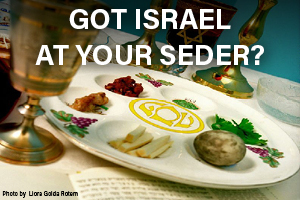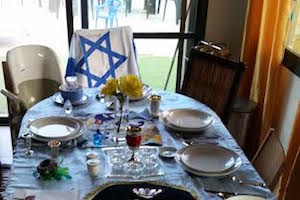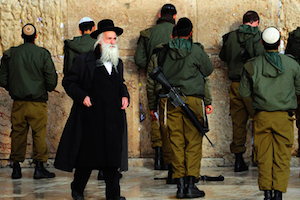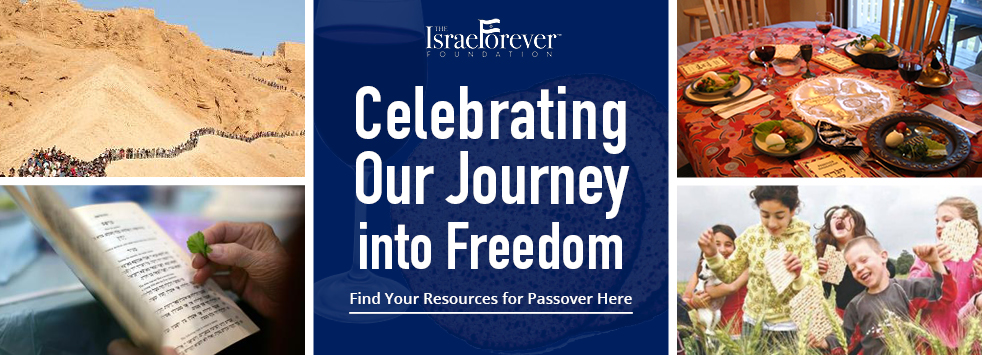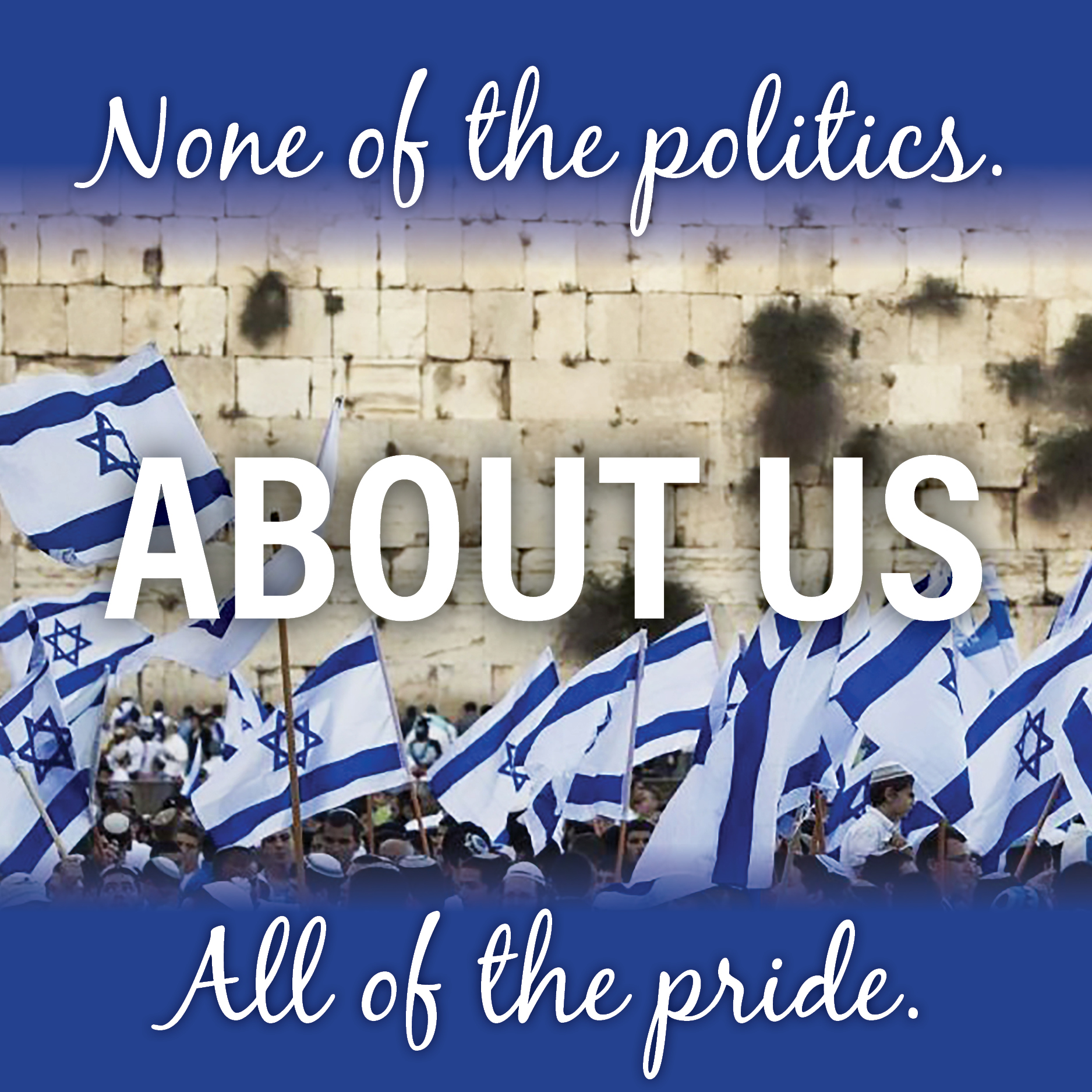Passover Reflections on Jewish Unity - From Four to Five and Beyond
by Rabbi Miriam C. Berkowitz
Every child around the seder table knows that Passover celebrates our liberation from Egypt.
But is that the whole story? Is it enough to leave Egypt or did the Israelites need to go TOWARD something else? Is entering Israel 40 years later a loosely-related postscript or rather the intentional culmination of the entire Exodus story?
Similarly, the Passover story does not end with leaving Egypt and crossing the Red Sea. The story only ends over 40 years later when the Israelites finally reached the Promised Land. Freedom from slavery enabled them to receive the Torah in the desert, shed their habits of subservience, and forge a new national identity fit for free people who would have to run their own economic, political, agricultural, cultural, moral and social affairs.
This connection is made explicit in the opening plate of Passover Landscapes: Illuminations on the Exodus and its companion, the Lovell Haggadah, by Rabbi Matthew Berkowitz, which open the Haggadah uncharacteristically with two images of Israel.
Plate 1, the papercut When You Enter the Land, depicts the ritual of hava'at bikurim, the bringing of the first fruits, along with the quote, “And you will bring these fruits of the ground that you will harvest from the land” (Deuteronomy 26:2). The woven basket overflows with the seven species. Gazelles above the basket symbolize the grace and beauty of Israel, which is referred to as eretz ha-tzvi, the land of the gazelle (Daniel 11:16, 41). It is superimposed on plate 2, Saturating Its Furrows, a panoramic view inspired by Mitzpe Netofah in the Northern Galilee. The image conveys the blessing and variety of the Israeli landscape: desert, mountains, fertile plains, and rolling hills.
The point is clear - entering the land is the final culmination of the Exodus from Egypt.
This point is reinforced with the symbol of the 4 cups of wine at Seder.
The rabbis who shaped Judaism 2,000 years based the 4 cups on 4 promises God made in Exodus 6:6-8:

Courtesy of The Magnes Collection of Jewish Art and Life, UC Berkeley
- “I will bring you out [ve-hotezeti] from under the burdens of the Egyptians…”
- “I will rescue you [ve-hitzalti] from their bondage…”
- “I will redeem [ve-ga-alti] you with an outstretched arm and with great judgments…”
- and “I will take you [ve-lakakhti] as My people and I shall be your God.”
In fact, the next verse also carries a promise:
“And I will bring you [ve-heveti] into the land which I swore to give to Abraham, Isaac, and Jacob; and I will give it [ve-natati] to you as a heritage: I am the Lord.”
This last verse is directly connected to the verses before it, and provides the very reason for leaving Egypt - to be a free people in our own land.
The sages, living at a time of uncertainty, debated whether to include the fifth cup and compromised by pouring it for Elijah, a symbol of hope in the future, but not drinking it. Living in exile or under hostile rule, with the symbols of national unity in ruins, they could not fully celebrate the promise of redemption.
But some say now that Israel has been restored to statehood, now that the gates of immigration are open, Hebrew has been revived as the spoken language, and we are thriving as an independent people, many think we should be drinking the 5th cup. Others continue to wait until the redemption is complete. An excellent summary by The Israel Guys discusses the pros and cons of each approach.
Lord Rabbi Jonathan Sacks, of blessed memory, brings other images of fours in the Haggadah that have a fifth element hovering in the background.
For example, there is a fifth question (in ma nishtana) that was said before the Temple was destroyed: why on all other nights do we eat meat roasted, stewed or boiled, but on this night we eat (only) roasted meat (Mishna Pesachim 4:4)? In Passover Landscapes, the lamb appears in pale grey, as a reminder of this question's presence among the four more vibrantly colored questions in our contemporary haggadot.
Sacks also discusses the four children, representative of parts within each of us, or the types of seekers around the table - from the intensely engaged, the passive and simplistic, even to the questioning and somewhat hostile. And then he urges us to invite the 5th child, the one who is so removed, uninterested, assimilated or apathetic that he (or she) is not even at the seder table.
Jewis unity means reaching out and inviting people who would not otherwise attend a seder, as in the words of “ha lachma anya” at the start of the seder, “Kol dichfin yeitei v’yeichol, kol ditzrich yeitei v’yifsach": Whoever is hungry - spiritually or physically - you are welcome at my table.
Israel Forever seeks to emphasize these twin messages of connection to the Land and Jewish unity, opening doors, opening hearts, and creating connections of friendship, shared learning and celebration.
START THE CONVERSATION
- Who are some of the “fifth children” you know and how might you reach out?
- What aspects of life in Israel do you think still need “redemption” and how can you help raise them to a more ideal form?
- How can we bring this new understanding, these "fives", to our seder table?
- If you could write something in the haggadah, to be read by people in 500 years, what would you say?
- What challenges come with running an independent Jewish state that Jews outside Israel are able to avoid? What opportunities come with full independence?
- In your lives this year, what are some things from which you have set yourself free? Things that your freedom enabled you to embrace?
- What are some “enslaving” habits, ideas, people, situations, FROM which you seek to break free in the year ahead, and what will you be able to do/see/fee/accomplish once you are free TO?

